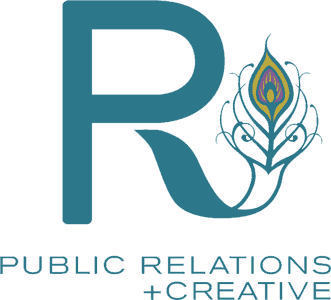R Public Relations Firm
Role of New Technologies in PR in 2023
Public relations (PR) is an incredibly fast-transforming industry heavily influenced by new technologies and trends. Over the last several years, we’ve seen the industry change drastically thanks to the emergence of increased social media opportunities, new artificial intelligence (AI) technology, and improved communication platforms.
In 2023, we expect to see even more changes in the PR technological space. Read on to learn more about the technologies in PR that we think will make the biggest impact in the coming year.
1. Affiliate Links & Online Shopping

Online shopping provides a wide range of growth options for businesses large, and small—and the sector is only getting bigger. PR teams would be wise to hop on new online shopping platforms, like Shopify, as soon as possible.
Shopify is just one example of how the new “click-through-to-purchase” features allow users to shop at the click of literally one button, making it easier than ever to capture new customers. Amazon storefronts are another great way to take advantage of more advanced online shopping technology. PR teams should spend time curating their pages on each online shopping app and make sure it is easy to use, features high-quality images, is highly descriptive, and is optimized for whatever product marketing campaigns are currently running.
Affiliate marketing will also continue to grow in 2023. Brands and influencers can refer audiences to products or services by sharing links on blogs, social media platforms, podcasts, or on their websites. Then, the brand or influencer receives a small commission when a sale is made using their affiliate link. This is a highly scalable technology that can be used to bring in passive income for all types of brands and creators in the coming year.
2. Technology for Creators

It’s time to rethink the “influencer.” Ultra-popular creators like Alix Earle are taking over the social media landscape with their relatable content and personas. PR teams can expect astronomical collaboration prices and more authentic branded content from the highest tier of influencers. Of course, this type of polished, professional content is dependent on cutting-edge social media and video editing technology. Expect to see more video editing and photo editing apps, improved photography and videography technology, and more sophisticated content creation in the coming year.
3. Enhanced Customization
Targeting technology continues to become more and more sophisticated, and this trend will likely continue in 2023. Audiences expect high levels of customization from all sorts of digital marketing and PR, from the social media posts that are suggested to them to the ads they view. Public relations campaigns are no exception to this rule.
PR professionals can use new and improved media targeting technologies to build stronger, more authentic connections with publications and writers. This will be a more effective strategy than mass pitching, and it will also lead to better coverage for clients; quality over quantity is key in the PR landscape. PR teams should also expect to employ AI and other new technologies to do better media and pitching research on the front end of campaigns.
4. Artificial Intelligence

You might be sick of hearing about AI, and who could blame you? AI seems to be everywhere these days, and it doesn’t look like it’s going away any time soon. PR professionals would be smart to adopt this technology for as many clients as they can, as soon as possible.
AI technologies in PR have become fairly commonplace, but industry professionals can expect to see them expand more in 2023. For example, automated emails using triggers from actions taken on a website already help with nurturing customers down the marketing funnel. Chatbots are also an oft-used form of AI that makes PR teams’ lives easier.
But professionals can expect to see these same technologies in PR applied to other areas of the industry, like in feet-on-the-street campaigns and at in-person events and trade shows. Pay close attention to Fortune 500 corporations who will likely be on the cutting edge of investing more AI technology into their PR campaigns this year.
What is the best way to stay on top of new technologies in PR?
Our team recommends reading newsletters like Raisin Bread from Marketerhire, Sprout Social’s newsletter, or Marketing Brew to stay on top of trends and new technologies in the larger PR and marketing landscape. You can also follow trend and tech accounts on social media platforms like Instagram and TikTok. Later does a great job of showcasing trends in social media and digital marketing. You can also read blogs like Really Good Emails. These, of course, are just a few places you can get your PR and marketing technology news—find the platforms you like the most and stick with them!
If you are too busy to keep up with the trends yourself, consider hiring a PR firm. PR teams specialize in keeping up with new technologies and trends, and your team will be able to make recommendations to you about which technologies to adopt and which to hold off on for the time being. Contact our team today to chat all things PR and explore what a partnership might look like for you!










